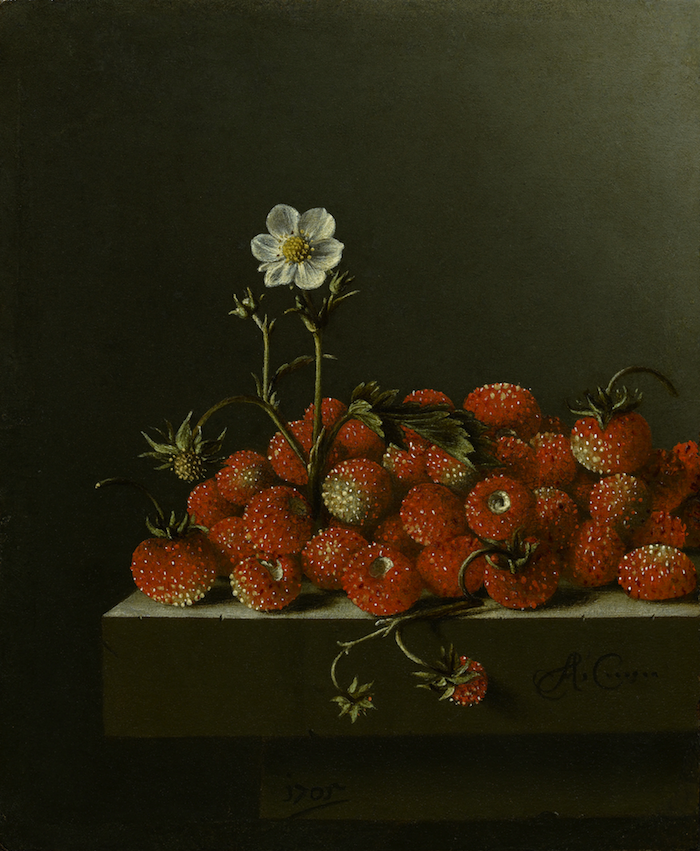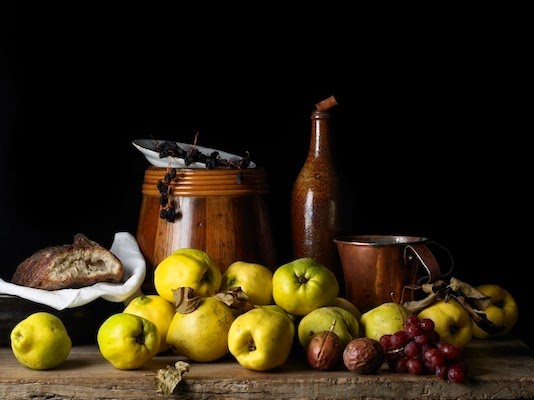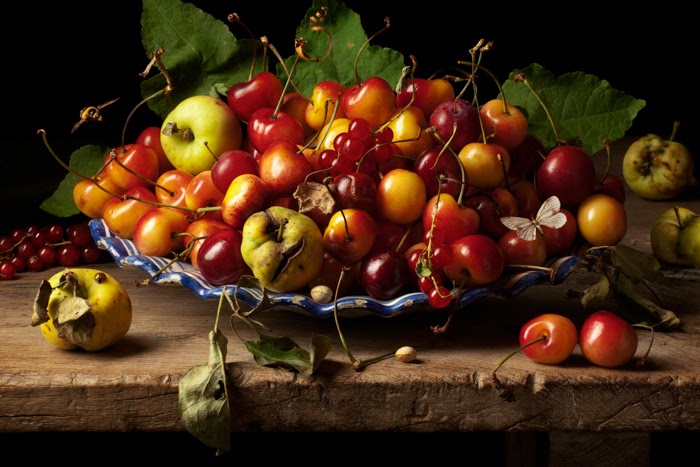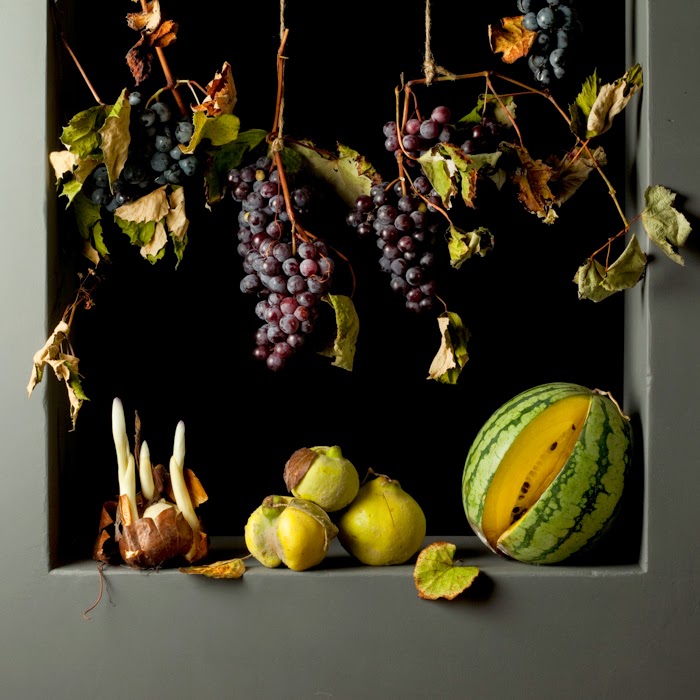Whence comes the sense of wonder we perceive when we encounter certain works of art? Admiration is born with our first gaze and if subsequently we should discover, in the patient obstinacy we apply in flushing out the causes thereof, that all this beauty is the fruit of a virtuosity that can only be detected through close scrutiny of a brush that has been able to tame shadow and light and restore shape and texture, by magnifying them - the transparent jewel of the glass, the tumultuous texture of the shells, the clear velvet of the lemon - this neither dissipates nor explains the mystery of one’s initial dazzled gaze.
~Muriel Barbery,
The Elegance of the Hedgehog
When I first saw Jan van Huysum's
Fruit Still Life at the museum, I was absolutely mesmerized. The translucence of the grape and red currant skins, showing the pips nestled in the jewel-toned flesh; the water droplets beading on the dusky plum, seemingly ready to cascade down a the slightest tremble; the brushwork skill necessary to render the miniscule ant in glorious detail - the painting, a mere 20 centimeters of canvas, has made me a woman obsessed. I haunted the large museums of Europe, seeking out other transcendent
nature morts.
While many different schools produced still lifes, it is the paintings of the Dutch and Flemish Old Masters that I see in my mind's eye. Their compositions are varied, from austere, very modern-feeling showcases of just one or two objects to exuberant floral displays featuring combinations of flowers that could never have been seen together at the time. However, all have in common a dedication to realism and detail, and a mastery of light, particularly in treatment of translucent and transparent materials.
Europe's time of wide geographic exploration and the scientific progress of the Age of Enlightenment nourished a new approach to observing and recording the natural world. The artists produced realistic, accurate and minutely detailed images of flora and fauna. They also rendered glass, water, the glistening oyster and the juicy flesh of citrus fruit with such exquisite thoroughness as to induce an involuntary mouthwatering reaction in the viewer.
Many generations of viewers, including other artists, have been moved and inspired by these works. Taste is subjective, and I find one in particular captures the essence of the Old Masters in a way that moves me much like the original. Paulette Tavormina stages incredible photographs, with both austere and flamboyant compositions, paying incredible attention to the light. She sites Adriaen Coorte (Dutch), Giovanna Garzoni (Italian) and Francesco de Zurbaran (Spanish) as her inspiration; for me, the textural quality of photography puts her work's essence closest to Adriaen Coorte and his Dutch and Flemish contemporaries.
Paulette Tavormina's portfolio features additional pieces inspired by the Old Masters, as well as more modern work. The pieces are all gorgeous, and start around US$2,000; this is expensive, but not outrageous for an established artist offering limited edition work that captures so well the essence of its subject matter.
1
And now, the
really great news - both
Mauritshuis Museum and
Rijksmuseum offer, for free, extremely high-resolution images of the art in their collections. Search the library by artist or keyword, find what you love and print for framing! The quality is great - even large-sized images will not pixelate.
1I am not compensated to promote Paulette Tavormina's work, nor do I know her personally. I thought her photographs were beautiful, and researched prices.
































No comments:
Post a Comment